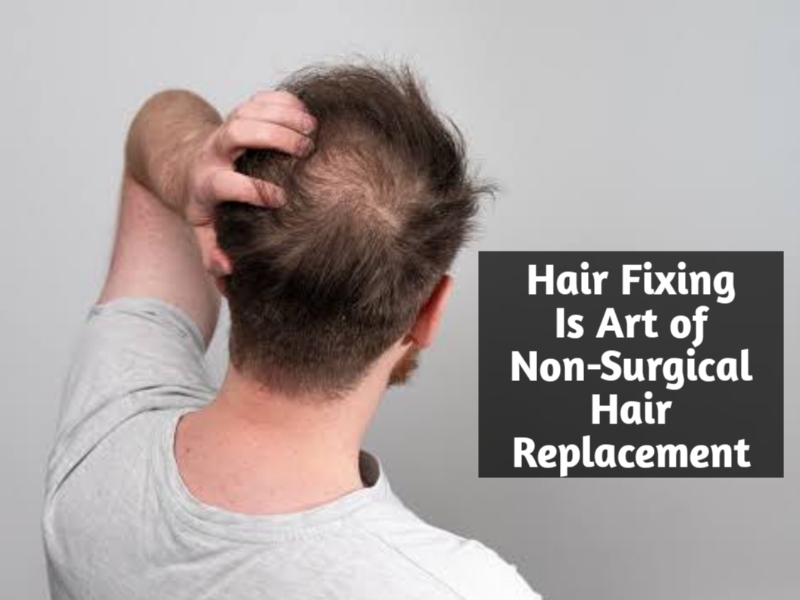Introduction:
Non-surgical hair replacement is the most modern method for treating hair loss.
In this method, a hair system (also known as a hair patch) is either pasted with an appropriate adhesive or woven to cover the bald area of the head.
These hair replacement systems may feature either synthetic or real hair.
A wig, Toupee, or hairpiece secured with hair clips is fixed to the client’s natural hair in a non-surgical restoration treatment known as “hair fixing.”
This is one of the earliest known ways to secure a hair extension.
Clips made of plastic and metal are utilized in this method, and the hair unit must be removed daily.
Wearing a clip-in hair solution to bed is not recommended since it can cause traction alopecia, which can enlarge the bald spot.
Those who have lost significant hair from the top and crown of their head may benefit from hair fixing.
What Exactly Is Hair Replacement Without Surgery?
• There are two senses in which the term “non-surgical hair replacement” might be understood.
The first category includes any method used to combat male pattern baldness that does not have surgery.
Products like minoxidil and finasteride, dietary supplements, shampoos formulated to reduce hair loss, and electronic hair-care tools fall under this broad category.
• The second is more narrowly focused.
Men with male-pattern baldness can choose from a restricted selection of hair replacement items worn on or applied to the scalp.
Why Choose Non-Surgical Hair Replacement and How Does It Work?
- There are many advantages to non-surgical hair replacement, including the reduced expense of a hair system and the elimination of the need for daily medication.
- The major benefit of non-surgical hair replacement is that you can see results (or at least an improvement in appearance) almost immediately. Once attached to the scalp, a hair system will make it appear as though you have a complete head of hair.
- This can give you a quick pick-me-up in self-assurance without the time commitment of medicines.
- To put this in perspective, it can take three months to a year for hair loss therapies like finasteride and minoxidil to show noticeable improvement in conditions like hair thinning.
- Hair transplants and other surgical procedures also necessitate a considerable time investment. It may take several months for new hair to grow after the treatment, which may take several days.
- In contrast, installing a hair system is typically a quick and painless process, and once it’s in place, maintaining it takes little time.
- The low cost of non-invasive methods of hair restoration is still another perk. Hair loss medication is very cheap, but hair transplant surgery can go into the tens of thousands if you want a natural-looking full head of hair.
- On the other hand, hair replacement systems of moderate to good quality can be acquired for a few hundred dollars, which is a far more manageable sum than the cost of hair transplant surgery.
Conclusion:
The advantages of non-surgical hair replacement include the reduced expense of employing a hair system and eliminating the requirement for regular medication.
Non-surgical hair replacement’s major selling point is that it immediately improves your appearance (if not your confidence).

